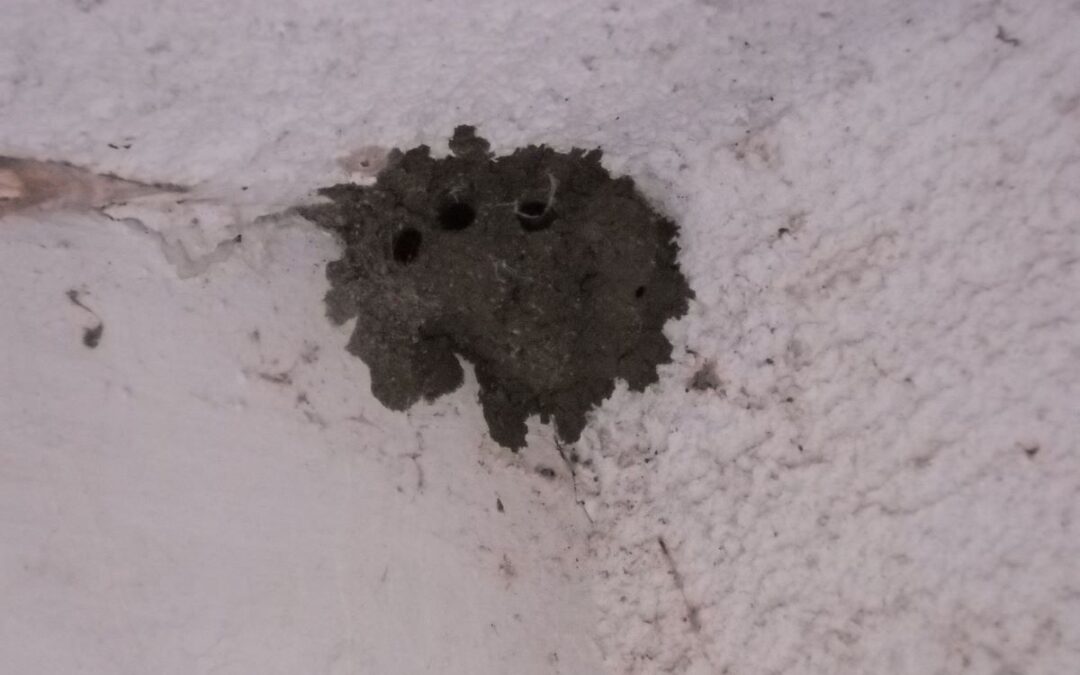You are not alone if you assumed mud daubers and wasps were the same thing. Most homeowners, number, one, don’t like the idea of any type of flying insect with the capability to sting hanging out at their place. Number two, those glops of mud that are in the crevices and eaves of your home just don’t look good.
You may or may not want to get rid of them and here’s why.
What is the Difference between mud daubers and wasps?
First, you need to ascertain if the flying stinging insect that you see is a mud dauber or a wasp. The look very much like each other but have entirely different personalities.
Here is the run-down on the visuals:
- Wasps have bright yellow stripes along their body which is generally thicker than mud daubers.
- Mud daubers might have a couple yellow stripes, but a thinner and longer than wasps.
And their personalities? Like Jekyll and Hyde.
- Wasps are social. Their nests are more like a hive for the group. They are territorial and will act with aggression and sting when they feel threatened.
- Mud daubers are solitary. They will avoid a confrontation and are very unlikely to sting.
Here’s the real dirt on mud daubers
While these light weights are mostly known as mud daubers, some in the South call them dirt daubers, but the same thing really. They get their common name from their nests. Mud dauber nests look like little clumps of mud with holes in them.
Female mud daubers construct their nests by gathering globs of mud in their mandibles (jaws) from a nearby source of wet dirt. They carry the mud to a protected nest site, where they construct a cell.
You might think that the cell is there for the eggs or larvae, and you would be right, but do you know what else is packed in there? Each cell is also filled with up to 25 to 30 spiders for their young. This leads us to the reason why you might want to tolerate a mud dauber next on your home.
Mud daubers help protect your family
Are you afraid of spiders? Are you deadly afraid of the brown recluse and black widow spiders? Well, mud daubers could be your best friend. They feed solely on spiders, especially those little deadly spiders that tuck neatly into their nests as food for their little ones.
Mud daubers have good vision and use landmarks to locate nests and hunt spiders. They prefer protected areas where there are plenty of spiders. Sometimes you might see them going in and out of your house vents, hunting for spiders in your attic.
Wondering how to protect mud dauber nests?
You may well be in the process of cleaning spiders and webs, from the eaves of your home. When doing this be sure to try protect those mud nests, because mud daubers naturally help control spiders in and around your home. Sweep and clear around them if at all possible
How do you get rid of mud dauber nests?
Although mud daubers are considered beneficial, you can remove the nests by scraping them off with a paint scraper or a knife into a dustpan, and then tossing them or moving them somewhere else where you don’t mind their activity. The best time to remove the nests is in the late evenings when wasps are not active, or during the wintertime when they are dormant.
Of course, we at Heath Pest Control are happy to help you remove or manage mud daubers and wasps that be flying around your home exterior. Just give us a call and we can come out to meet you and assess the situation.
We sure hope you feel comfortable with taking the next steps and would give us a call. You can also request a visit at this link.

